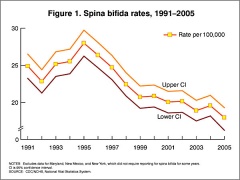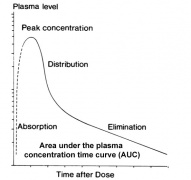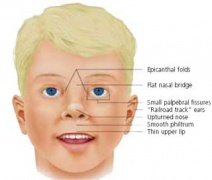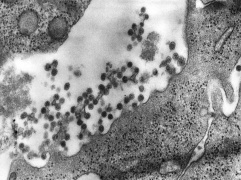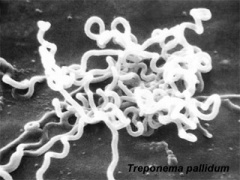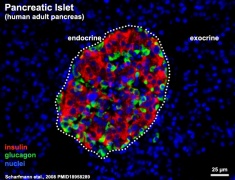Talk:Abnormal Development - Environmental
| About Discussion Pages |
|---|
On this website the Discussion Tab or "talk pages" for a topic has been used for several purposes:
Glossary Links
Cite this page: Hill, M.A. (2024, May 8) Embryology Abnormal Development - Environmental. Retrieved from https://embryology.med.unsw.edu.au/embryology/index.php/Talk:Abnormal_Development_-_Environmental |
2016
2014
Maternal genetic variation accounts in part for the associations of maternal size during pregnancy with offspring cardiometabolic risk in adulthood
PLoS One. 2014 Mar 26;9(3):e91835. doi: 10.1371/journal.pone.0091835. eCollection 2014.
Wander PL1, Hochner H2, Sitlani CM3, Enquobahrie DA4, Lumley T5, Lawrence GM2, Burger A2, Savitsky B2, Manor O2, Meiner V6, Hesselson S7, Kwok PY8, Siscovick DS9, Friedlander Y2.
Abstract
BACKGROUND: Maternal pre-pregnancy body-mass index (ppBMI) and gestational weight gain (GWG) are associated with cardiometabolic risk (CMR) traits in the offspring. The extent to which maternal genetic variation accounts for these associations is unknown. METHODS/RESULTS: In 1249 mother-offspring pairs recruited from the Jerusalem Perinatal Study, we used archival data to characterize ppBMI and GWG and follow-up data from offspring to assess CMR, including body mass index (BMI), waist circumference, glucose, insulin, blood pressure, and lipid levels, at an average age of 32. Maternal genetic risk scores (GRS) were created using a subset of SNPs most predictive of ppBMI, GWG, and each CMR trait, selected among 1384 single-nucleotide polymorphisms (SNPs) characterizing variation in 170 candidate genes potentially related to fetal development and/or metabolic risk. We fit linear regression models to examine the associations of ppBMI and GWG with CMR traits with and without adjustment for GRS. Compared to unadjusted models, the coefficient for the association of a one-standard-deviation (SD) difference in GWG and offspring BMI decreased by 41% (95%CI -81%, -11%) from 0.847 to 0.503 and the coefficient for a 1SD difference in GWG and WC decreased by 63% (95%CI -318%, -11%) from 1.196 to 0.443. For other traits, there were no statistically significant changes in the coefficients for GWG with adjustment for GRS. None of the associations of ppBMI with CMR traits were significantly altered by adjustment for GRS. CONCLUSIONS: Maternal genetic variation may account in part for associations of GWG with offspring BMI and WC in young adults.
PMID 24670385
2013
Pregnancy: occupational aspects of management: concise guidance
Clin Med. 2013 Feb;13(1):75-9.
Palmer KT, Bonzini M, Bonde JP; Multidisciplinary Guideline Development Group; Health and Work Development Unit,; Royal College of Physicians; Faculty of Occupational Medicine. Collaborators (9)
Medical Research Council Lifecourse Epidemiology Unit, University of Southampton. ktp@mrc.soton.ac.uk
Abstract
Most pregnant women are exposed to some physical activity at work. This Concise Guidance is aimed at doctors advising healthy women with uncomplicated singleton pregnancies about the risks arising from five common workplace exposures (prolonged working hours, shift work, lifting, standing and heavy physical workload). The adverse outcomes considered are: miscarriage, preterm delivery, small for gestational age, low birth weight, pre-eclampsia and gestational hypertension. Systematic review of the literature indicates that these exposures are unlikely to carry much of an increased risk for any of the outcomes, since small apparent effects might be explicable in terms of chance, bias, or confounding, while larger and better studies yield lower estimated risks compared with smaller and weaker studies. In general, patients can be reassured that such work is associated with little, if any, adverse effect on pregnancy. Moreover, moderate physical exercise is thought to be healthy in pregnancy and most pregnant women undertake some physical work at home. The guidelines provide risk estimates and advice on counselling.
PMID 23472500
2012
Congenital anomalies among live births in a polluted area. A ten-year retrospective study
BMC Pregnancy Childbirth. 2012 Dec 27;12:165. doi: 10.1186/1471-2393-12-165.
Gianicolo EA, Bruni A, Rosati E, Sabina S, Guarino R, Padolecchia G, Leo C, Vigotti MA, Andreassi MG, Latini G. Source National Research Council, Institute of Clinical Physiology, Lecce, Italy. emilio.gianicolo@ifc.cnr.it
Abstract
BACKGROUND: Congenital anomalies and their primary prevention are a crucial public health issue. This work aimed to estimate the prevalence of congenital anomalies in Brindisi, a city in southeastern Italy at high risk of environmental crisis. METHODS: This research concerned newborns up to 28 days of age, born between 2001 and 2010 to mothers resident in Brindisi and discharged with a diagnosis of congenital anomaly. We classified cases according to the coding system adopted by the European Network for the Surveillance of Congenital Anomalies (EUROCAT). Prevalence rates of congenital anomalies in Brindisi were compared with those reported by EUROCAT. Logistic regression models were adapted to evaluate the association between congenital anomalies and municipality of residence of the mother during pregnancy. RESULTS: Out of 8,503 newborns we recorded 194 subjects with congenital anomalies (228.2/10,000 total births), 1.2 times higher than the one reported by the EUROCAT pool of registries. We observed 83 subjects with congenital heart diseases with an excess of 49.1%. Odds Ratios for congenital heart diseases significantly increased for newborns to mothers resident in Brindisi (OR 1.75 CI 95% 1.30-2.35). CONCLUSIONS: Our findings indicated an increased prevalence of Congenital Anomalies (especially congenital heart diseases) in the city of Brindisi. More research is needed in order to analyze the role of factors potentially involved in the causation of congenital anomalies.
PMID 23270371
2011
Low frequency vibrations disrupt left-right patterning in the Xenopus embryo
PLoS One. 2011;6(8):e23306. Epub 2011 Aug 3.
Vandenberg LN, Pennarola BW, Levin M. Source Center for Regenerative and Developmental Biology, Tufts University, Medford, Massachusetts, United States of America.
Abstract
The development of consistent left-right (LR) asymmetry across phyla is a fascinating question in biology. While many pharmacological and molecular approaches have been used to explore molecular mechanisms, it has proven difficult to exert precise temporal control over functional perturbations. Here, we took advantage of acoustical vibration to disrupt LR patterning in Xenopus embryos during tightly-circumscribed periods of development. Exposure to several low frequencies induced specific randomization of three internal organs (heterotaxia). Investigating one frequency (7 Hz), we found two discrete periods of sensitivity to vibration; during the first period, vibration affected the same LR pathway as nocodazole, while during the second period, vibration affected the integrity of the epithelial barrier; both are required for normal LR patterning. Our results indicate that low frequency vibrations disrupt two steps in the early LR pathway: the orientation of the LR axis with the other two axes, and the amplification/restriction of downstream LR signals to asymmetric organs.
PMID 21826245
Stockholm Convention on Persistent Organic Pollutants
http://chm.pops.int/default.aspx
2009
The Pine River statement: human health consequences of DDT use
Environ Health Perspect. 2009 Sep;117(9):1359-67. Epub 2009 May 4.
Eskenazi B, Chevrier J, Rosas LG, Anderson HA, Bornman MS, Bouwman H, Chen A, Cohn BA, de Jager C, Henshel DS, Leipzig F, Leipzig JS, Lorenz EC, Snedeker SM, Stapleton D.
School of Public Health, University of California-Berkeley, 2150 Shattuck Avenue, Berkeley, CA 94720, USA. eskenazi@berkeley.edu Abstract OBJECTIVES: Dichlorodiphenyltrichloroethane (DDT) was used worldwide until the 1970s, when concerns about its toxic effects, its environmental persistence, and its concentration in the food supply led to use restrictions and prohibitions. In 2001, more than 100 countries signed the Stockholm Convention on Persistent Organic Pollutants (POPs), committing to eliminate the use of 12 POPs of greatest concern. However, DDT use was allowed for disease vector control. In 2006, the World Health Organization and the U.S. Agency for International Development endorsed indoor DDT spraying to control malaria. To better inform current policy, we reviewed epidemiologic studies published from 2003 to 2008 that investigated the human health consequences of DDT and/or DDE (dichlorodiphenyldichloroethylene) exposure.
DATA SOURCES AND EXTRACTION: We conducted a PubMed search in October 2008 and retrieved 494 studies.
DATA SYNTHESIS: Use restrictions have been successful in lowering human exposure to DDT, but blood concentrations of DDT and DDE are high in countries where DDT is currently being used or was more recently restricted. The recent literature shows a growing body of evidence that exposure to DDT and its breakdown product DDE may be associated with adverse health outcomes such as breast cancer, diabetes, decreased semen quality, spontaneous abortion, and impaired neurodevelopment in children.
CONCLUSIONS: Although we provide evidence to suggest that DDT and DDE may pose a risk to human health, we also highlight the lack of knowledge about human exposure and health effects in communities where DDT is currently being sprayed for malaria control. We recommend research to address this gap and to develop safe and effective alternatives to DDT.
PMID 19750098
2007
The effect of hypoxia in development
Birth Defects Res C Embryo Today. 2007 Sep;81(3):215-28.
Webster WS, Abela D. Source Department of Anatomy and Histology, University of Sydney, Sydney, Australia. billweb@anatomy.usyd.edu.au
Abstract
There is increasing evidence that the oxygen supply to the human embryo in the first trimester is tightly controlled, suggesting that too much oxygen may interfere with development. The use of hypoxia probes in mammalian embryos during the organogenic period indicates that the embryo is normally in a state of partial hypoxia, and this may be essential to control cardiovascular development, perhaps under the control of hypoxia-inducible factor (HIF). A consequence of this state of partial hypoxia is that disturbances in the oxygen supply can more easily lead to a damaging degree of hypoxia. Experimental mammalian embryos show a surprising degree of resilience to hypoxia, with many organogenic stage embryos able to survive 30-60 min of anoxia. However, in some embryos this degree of hypoxia causes abnormal development, particularly transverse limb reduction defects. These abnormalities are preceded by hemorrhage/edema and tissue necrosis. Other parts of the embryo are also susceptible to this hypoxia-induced damage and include the genital tubercle, the developing nose, the tail, and the central nervous system. Other frequently observed defects in animal models of prenatal hypoxia include cleft lip, maxillary hypoplasia, and heart defects. Animal studies indicate that hypoxic episodes in the first trimester of human pregnancy could occur by temporary constriction of the uterine arteries. This could be a consequence of exposure to cocaine, misoprostol, or severe shock, and there is evidence that these exposures have resulted in hypoxia-related malformations in the human. Exposure to drugs that block the potassium current (IKr) can cause severe slowing and arrhythmia of the mammalian embryonic heart and consequently hypoxia in the embryo. These drugs are highly teratogenic in experimental animals. There is evidence that drugs with IKr blockade as a side effect, for example phenytoin, may cause birth defects in the human by causing periods of embryonic hypoxia. The strongest evidence of hypoxia causing birth defects in the human comes from studies of fetuses lacking hemoglobin (Hb) F. These fetuses are thought to be hypoxic from about the middle of the first trimester and show a range of birth defects, particularly transverse limb reduction defects. (c) 2007 Wiley-Liss, Inc.
PMID 17963271
2004
Catalog of Teratogenic Agents
by Thomas H. Shepard, Ronald J. Lemire 11th Edn (2004). http://books.google.de/books?id=vBIl2OA6BK8C&lpg=PA205&ots=FJC4k65YKo&dq=cholera%20teratogenic&pg=PP1#v=onepage&q=cholera%20teratogenic&f=false

